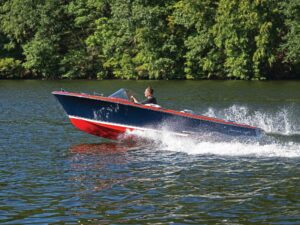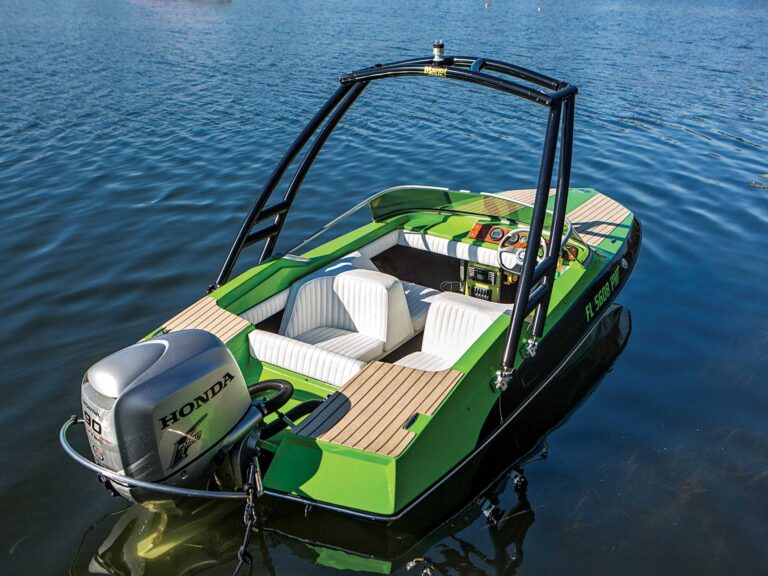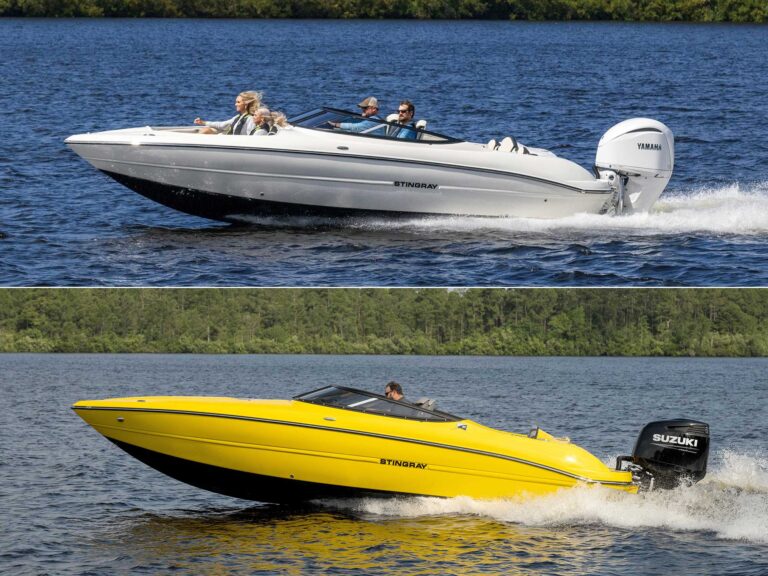Spend a few long days fishing the ocean or Great Lakes from an open boat, and you’ll long for the comfort of a cabin.
Whether you are anchored for the night or blasting offshore, dampness and wind can chill you to the bone, turning that special fishing trip into a special brand of misery.
Both walkaround-cuddy and pilothouse fishing boats have cabins, but each offers a different approach to comfort. To help you decide which one best suits your boating style, we took a hard look at two marquee models and developed 10 points of comparison.
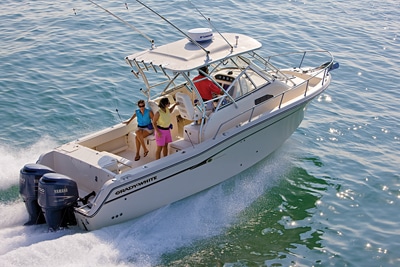
Walkaround
No name is more closely associated with WA boats than Grady-White. Its Chesapeake 290 is a prime example.
1. Ventilation
Summer heat can make you hate an enclosed helm. With a WA, you can remove the enclosure for all-around ventilation and usher a cooling headwind to the cockpit.
2. Communication
With no enclosure, wind noise can impair conversations while under way. Yet while fishing, a skipper at the helm can easily talk with anglers in the cockpit or bow, and with crew on the dock.
3. Bridge Protection
Primary protection comes from the wraparound windshield. Yet, to shield the bridge deck, you will need a Bimini top with an enclosure. Even better is a hardtop with an enclosure.
4. Visibility
With no bulkheads or window mullions, a WA offers excellent visibility, especially if you peer over the windshield. However, a WA’s clear-vinyl enclosure can be tough to see through after dark.
5. Overnighting
The Chesapeake 290 has a midcabin berth, as well as a V-berth. There’s also a galley and enclosed head. On walkarounds, however, cabin width is reduced by the intruding exterior walkways, which can also cramp the bridge.
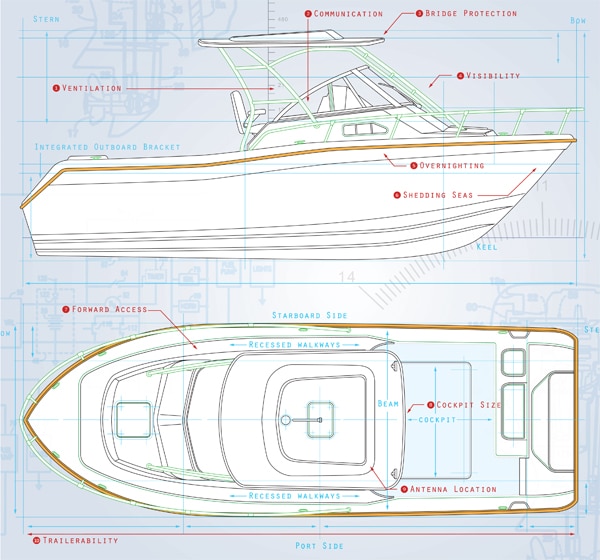
6. Shedding Seas
If you take water over the bow, the walkways channel water into the cockpit. While most big-water boats have self-bailing cockpits, it would be nice to shed the seas before they get aft.
7. Forward Access
A WA features recessed walkways along both cabin sides leading to the bow. Only a center-console offers greater maneuverability.
8. Cockpit Size
The Chesapeake 290’s 56-square-foot cockpit is smaller than the PH cockpit in this comparison. However, the 290 has an integrated motor bracket, while the PH has a bracket bolted to its full transom, creating more cockpit space in a given length.
9. Antennas
Without a hardtop, finding a place to mount GPS, VHF and radar antennas can be a challenge. Think about an arch for antennas as well as outriggers.
10. Trailerability
If you have a Bimini or an enclosure, you will need to remove the curtains and fold down/secure the top before you tow your boat. These items aren’t made to survive at highway speeds. Fold-down Bimini tops let you sneak under low bridges and trees.
Overall
If easier access to the bow, more berth space, a good field of view and a cool breeze on the bridge deck are most important to you in a cabin boat for fishing, choose a WA over a PH.
Grady-White Chesapeake 290
Length: 28’6″
Beam: 9’11”
Draft: 1’6″
Displ. (no power): 7,650 lb.
Transom Deadrise: 20 degrees
Bridge Clearance: 9’9″ (w/ hardtop)
Max Cabin Headroom: 6’4″
Fuel Capacity: 206 gal.
Horsepower: 600
Base Price: $203,345 w/twin Yamaha 250s
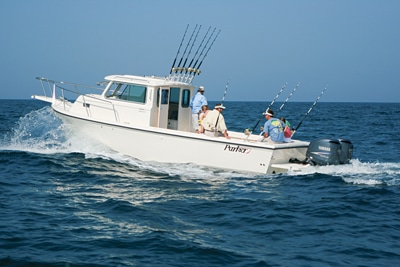
Pilothouse
Parker builds the archetypal PH fishing boat. Its no-nonsense approach to this genre is captured in the 2820 XLD Sport Cabin.
1. Ventilation
For fresh air on a sultry day, open all of the cabin windows and the cabin door, as well as the hatch above the V-berth. But you still won’t get the same volume of air as with a WA.
2. Communication
It’s quiet on the bridge deck, and so no shouting is needed while under way. Yet it can be tough for the captain to hear anglers in the cockpit, or dock hands. An aft-facing hailer hooked to the VHF PA system is a good idea.
3. Bridge Protection
No layout beats a PH for keeping the bridge deck dry and warm. Shut the cabin door to keep cold air and mist at bay.
4. Visibility
There’s no peering over the windshield. And many PH cabins have supports that prevent a 360-degree view. Also, at night, the tinted glass can hamper visibility, but if the weather’s decent, prop open the forward windows to see more clearly.
5. Overnighting
The 2820’s enclosed V-berth will sleep two, and the toilet is under the bunks. A galley with a cabinet sink, refrigerator and stove is an option. Many PH models have a step-down bridge deck (for more headroom), and this often precludes space for a midcabin berth.
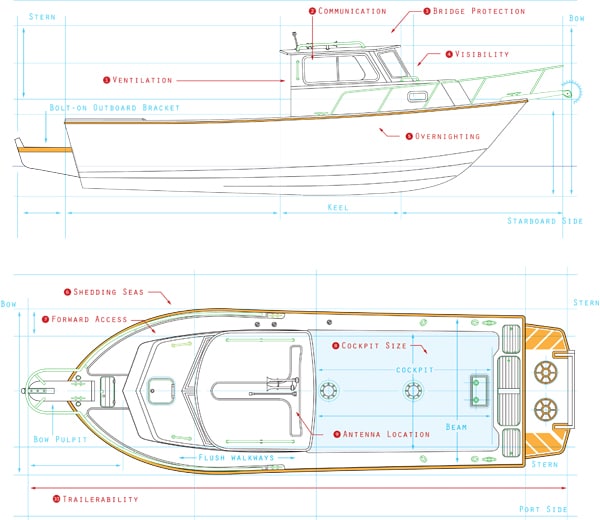
6. Shedding Seas
Most PH boats have domed decks forward, which are excellent at shedding seas. Side decks are relatively flush with the sheer line to divert water overboard.
7. Forward Access
To get to the bow, you need to negotiate narrow side decks. It’s a challenge, particularly if working a fish or manning the anchor in rough conditions.
8. Cockpit Size
What the 2820 lacks in overnight comforts it makes up for in cockpit size. Thanks to its cab-forward design and outboard bracket, there are 82.5 square feet of wide-open deck, room for a boatload of anglers.
9. Antennas
The hardtop of a PH is ideal for mounting GPS, VHF and radar antennas, as well as a hailer, outriggers and a rod rack. Some boaters also mount an emergency life raft container atop the house.
10. Trailerability
PH boats are ready for the road. Plus, you can stow loose gear in the cabin. But bridge clearance is higher than in a WA with a folding Bimini.
Overall
If you’re looking for a fishing boat with a dry, warm bridge deck, the ability to quickly shed water in rough seas and minimal prep time for towing, a PH might be right in your comfort zone.
Parker 2820 XLD
Length: 28’0″ (excl. bracket)
Beam: 9’6″
Draft: 1’6″
Displ. (no power): 6,400 lb.
Transom Deadrise: 21 degrees
Bridge Clearance: 8’2″
Max Cabin Headroom: 6’3″
Fuel Capacity: 250 gal.
Horsepower: 600
Base Price: $134,495* w/twin Yamaha 250s
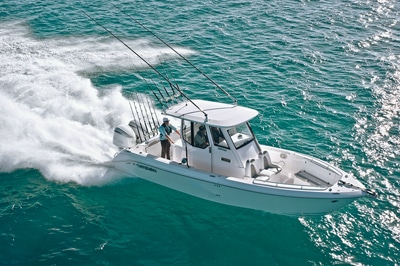
Splitting the Difference
Ok, so you’re a center-console guy but like the idea of a weathertight helm enclosure. Check out Everglades’ 295 Pilot with a cozy house to keep you dry while under way.
Here are a few examples of companies that make both walkaround and pilothouse models based on the same bottom.
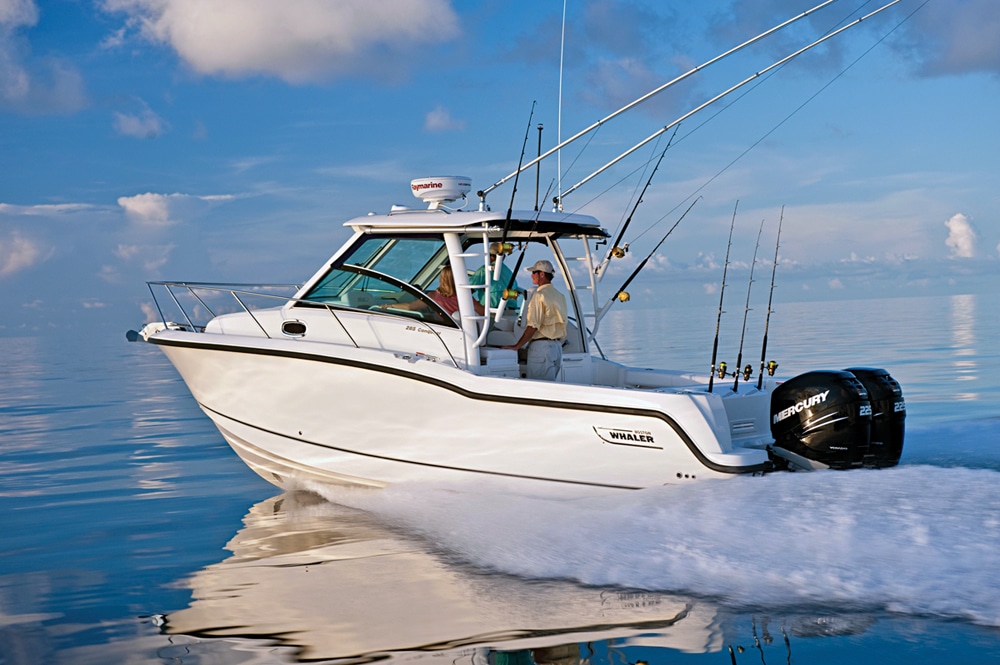
Walkaround vs Pilothouse
285 Conquest Walkaround
Base price: $183,552 Boston Whaler
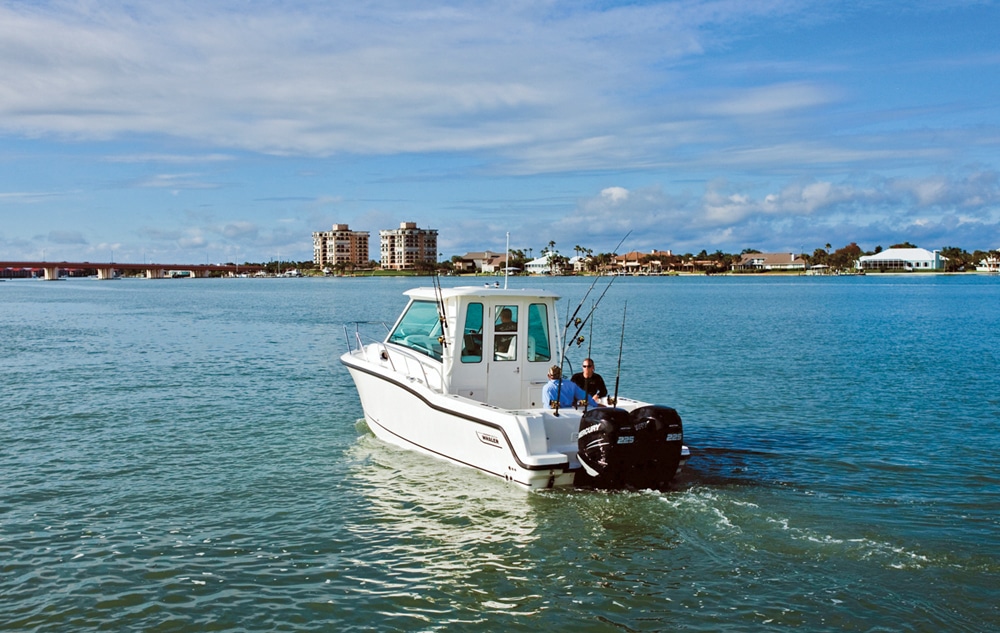
Walkaround vs Pilothouse
285 Conquest Pilothouse
Base price: $196,895 Boston Whaler
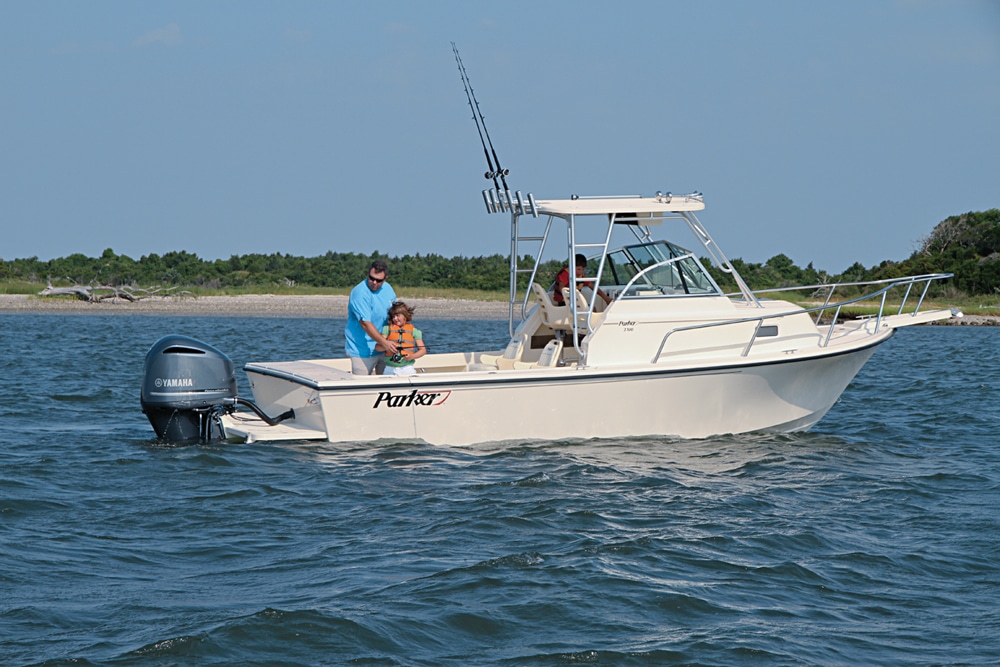
Walkaround vs Pilothouse
2310 DV Walkaround
Base price: $73,418* Parker Boats
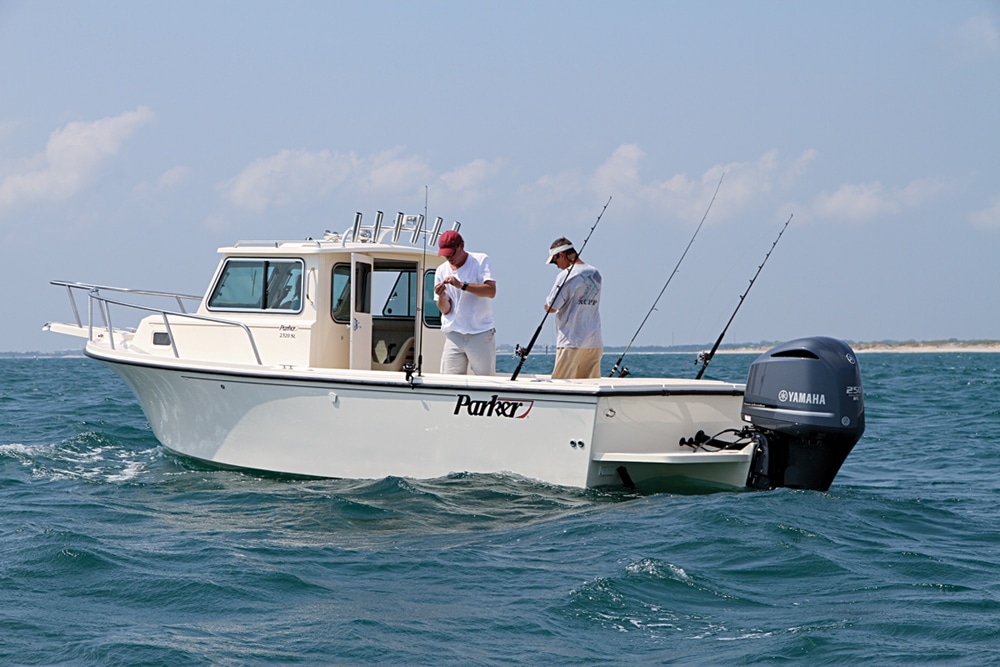
Walkaround vs Pilothouse
2320 SL Sport Cabin
Base price: $69,973* Parker Boats
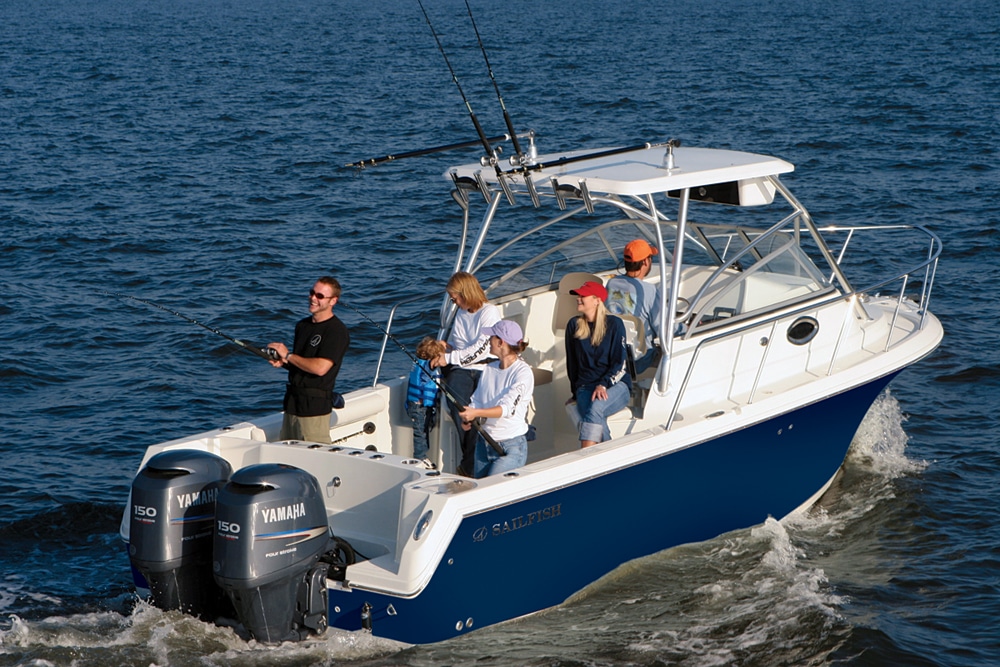
Walkaround vs Pilothouse
2660 WAC Walkaround
Base price: $117,940 Sailfish Boats
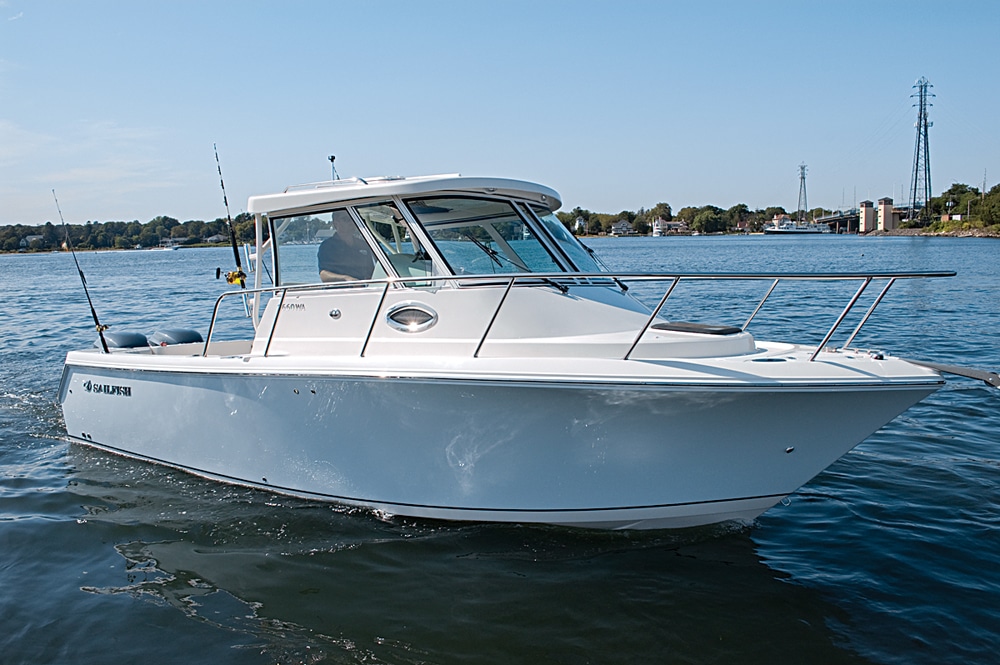
Walkaround vs Pilothouse
2660 WAC Pilothouse
Base price: $133,095 Sailfish Boats



